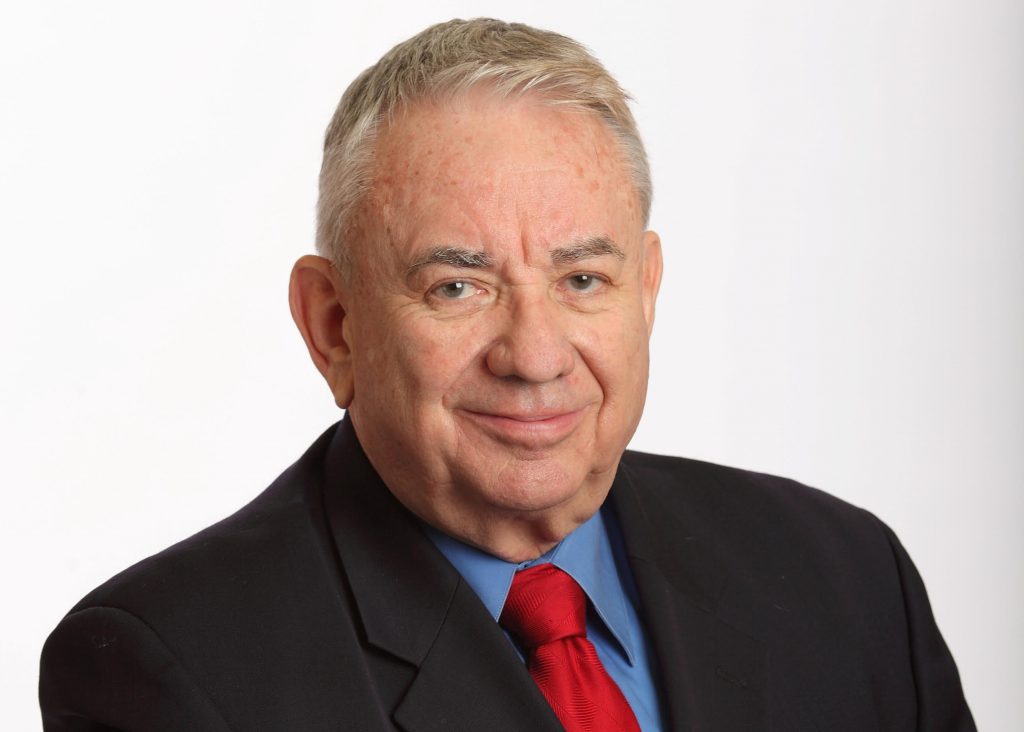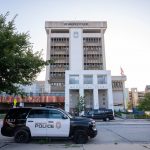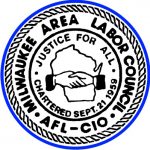Thompson Right On UW System Future
Blue-ribbon commission needed to address falling enrollment, massive challenges.
The Grand Old Man of the Grand Old Party in Wisconsin, Tommy Thompson, never lacks for ideas to move the state forward. But maybe because he is a short-timer as interim UW System president, his good ideas don’t automatically find traction.
Thompson has served 14 months in the interim position, so he has a close-up perspective on the strengths and weaknesses of the UW System. And he has come to the conclusion that we need to take a step back and look broadly at the future of one of the state’s most valuable assets. It is an enormous enterprise that comprises 40,000 employees, 170,000 students and a $6 billion operating budget.
In particular, Sen. Roger Roth of Appleton, chair of the Universities and Technical Colleges Committee, has proposed such a commission and has suggested that the university be reorganized into four regions. He held hearings across the state and issued an analysis that recommends those changes.
There has been little uptake in the legislature or in the governor’s office on his or Tommy’s proposal. Nor has the Board of Regents made such a recommendation.
The status quo is always comfortable and safe in political terms, but the pressures on higher education have reached a critical stage when reorganization is pressing. Roth pointed out that UW enrollments have dropped 15,000 students in the last decade and are projected to drop another 15,000 students in the coming decade. If any business had that kind of falloff in demand, its leaders would be forced to take a hard look at the fundamentals of the business, its marketplace, and make changes.
The university is not a business, but in some dimensions, it needs to operate like one. It has to deliver a viable product at an affordable price.
One obvious answer is to close some campuses where the enrollment has fallen below a critical mass, but that is far too simple. Macro changes in the external realities for higher education cannot go undressed if the system is to stay viable.
UW leaders must adapt to the following external realities as they do their forward planning:
- An increase in enrollment won’t happen until 2030.
- Soaring student debt that puts a crimp on the ability of the campuses to raise tuition.
- Online education, while less attractive than person-to-person education on campus, is a force that will not be denied. For example, a completely online law degree is in the works. Online learning needs to be deeply woven into the fabric of university offerings.
- High school graduates enter the world of higher education with as much as a year of advanced credits from either AP courses or dual enrollment.
- The Wisconsin Technical College System continues to push more general education at its 50 campuses across the state for its two-year degrees. That puts the technical system into increasing competition with the 13 UW two-year liberal arts colleges that have been merged into the four-year comprehensive university colleges.
- The consolidation of the 13 former UW colleges into the four-year universities has to be examined for how the merger has worked out. For example, the concept of “university centers” for four-year degrees offered on those campuses has been quietly dropped. How did that happen without debate and notice?
- The once prominent University of Wisconsin-Extension has been merged into UW Madison and has become even more invisible. Does it still have a role in the Wisconsin Idea of stretching the university to the boundaries of the state?
- The university has over time acquired many assets that are non-core to its mission.
- The University of Wisconsin-Madison is sitting on its largest gift in university history without much impact. That would be the $400 million it received as a windfall 15 years ago when BlueCross of Wisconsin went public. Half of that windfall went to the Medical College of Wisconsin, which has invested in initiatives across the state. The other half that went to the University of Wisconsin-Madison, now controlled by the Board of Regents, has invested in only small-ball projects that have had little impact. What to do with money that was earmarked for public health?
- In his webinar, Thompson called several times for making UW Milwaukee a more powerful flagship to lift the Milwaukee region though its many challenges. Note: The opposite happened in the just-adopted state budget.
In light of these profound trends and questions, who can argue that Thompson wasn’t right on the mark in calling for a blue ribbon commission comprised of some of the best minds in the state? That last such commission was in 1971, a half century ago.
Tommy says the next president needs to be a “change artist who is willing to stand up and make decisions.”
The blue ribbon commission could lay out future pathways for the incoming president and provide the underlying analysis for each of them. That kind of groundwork would enable the next president to get off to a fast and informed start.
John Torinus is the chairman of Serigraph Inc. and a former Milwaukee Sentinel business editor who blogs regularly at johntorinus.com.
Op-Ed
-
Wisconsin Candidates Decry Money in Politics, Plan to Raise Tons of It
 Dec 15th, 2025 by Ruth Conniff
Dec 15th, 2025 by Ruth Conniff
-
Trump Left Contraceptives to Rot; Women Pay the Price
 Dec 8th, 2025 by Dr. Shefaali Sharma
Dec 8th, 2025 by Dr. Shefaali Sharma
-
Why the Common Council’s Amended Budget is Good Policy for Milwaukee
 Nov 20th, 2025 by Alds. Marina Dimitrijevic and Russell W. Stamper, II
Nov 20th, 2025 by Alds. Marina Dimitrijevic and Russell W. Stamper, II






















John Torinus lays out a daunting and comprehensive list of challenges to the UW system. A couple of thoughts, starting with two assumed facts. First, the University of Wisconsin system is the single most important and valuable institution in the state, a key to the State’s future. (UW-Madison was just ranked the 4th best school in the country by The Washington Monthly). Second, there are powerful forces in the state, including the Republican Party, its “base,” and its right-wing plutocratic funders, who do not value it as an institution, who see it as little more than a corporate training center, and who loathe liberal arts education. As long as they are in – or near – the saddle, the future won’t look bright, Blue-Ribbon Panel or not.
Historically, the University, UWM in particular, was a – and in many instances “the” – vehicle for upward advancement for low-income, “first-in-family” young people. Present company included. As a UWM freshman, my tuition was $160 per year (about $1,600 in 2021 dollars), get your books at Mike Green’s Used Book Store, “pay me when you’ve got the money. I know you’re good for it.” No one encouraged me to go to college, and I had been a poor high school student. I went to college because I didn’t want to work at American Motors, and the $80 per semester tuition at UWM was no impediment. I can say with great certainty that, at today’s tuition levels, approximately $9,000, I would not have gone to college or had the life-changing experience that UWM was for me, and many others like me. I would like to think that I have paid back the State’s investment in me.
These are two big issues that should be near the top of anyone’s agenda for system change and reform. And, they are directly connected. I don’t know the exact level of State support for UWM and the other schools back in the 1960s, but I do know that it was far higher than the current less than 20% of the budget today. If you want to reverse declining enrollment, make college “affordable,” give low-income kids a pathway to higher education and success, and reduce our world-class income inequality, provide the needed public support.
When rural areas continue to elect Republican representatives whose life is fighting the culture wars and advancing conspiracy theories, nothing is going to happen. These people are able to stay in office because of unlimited campaign contributions from a few wealthy individuals who have made their billions and feel no responsibility for improving the economy of the State so that everyone will benefit.
Here’s something to consider when planning for UW System’s future: Easy access by public transportation.
This is especially important for technical colleges and 2-year transfer colleges where students do not primarily reside on campus. This also raises the question of whether laboratory spaces for science, technology and engineering programs should be built in convenient places. The choice is either to bring the students to the labs or the labs to the students.